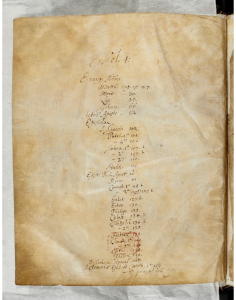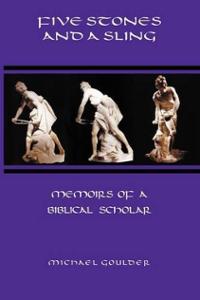More Matthean creativity
In a recent post on parables I quoted Michael Goulder’s recollections on why he came to the conclusion that the parables attributed to Jesus were really the literary creations of each of the gospel authors (evangelists). A few pages on in his memoirs, Five Stones and a Sling, Goulder further recalls what led him to believe other “sayings of Jesus” in the gospels were likewise the authors’ inventions.
The Gospels contain a number of double animal images:
- ‘Be ye wise as serpents and harmless as doves’;
- ‘You strain out a gnat but swallow a camel’;
- ‘Give not that which is holy to the dogs and cast not your pearls before swine’.
There are ten of these double animal images in the Gospels, and all of them are in Matthew; this seems to cogent evidence that they were created, not by Jesus, but by Matthew himself. (p. 62, my formatting as throughout)
Why did he write his Gospel?
Goulder relates that he was seeking to understand the way the Gospel of Matthew had been put together. Overall it looks like the author has composed various series of (mostly healing) incidents and interrupted them by five passages of discourse:
- The Sermon on the Mount (ch 5-7)
- The Mission Discourse (ch 10)
- The Harvest Parables (ch 13)
- A Church Law Discourse (ch 18-19)
- The Discourse on the End (ch 24-25)
I had long ago heard it suggested that Matthew was attempting to write a Gospel that was in some sense modelled on the five books of Moses (the Pentateuch) but Goulder points out what most of us who have attempted to explore that particular pattern have surely come to suspect — that “the fit is not good”.
So why did Matthew write his gospel? (Of course we have no way of identifying the real author so our reference to Matthew is for convenience.)
It can hardly have been to sell it in a bookshop, and the general tone of the Gospel suggests that it was written to be read aloud in church. (p. 63)
Given its lengthy twenty-eight chapters it is not likely to have been read in a single sitting. (Though I have heard of some congregations sitting through three hour sermons!)
Eureka?

Goulder tells us that, like Archimedes, the solution to his question came to him while sitting in a bath.
The Gospel of Matthew can be easily divided into many smaller units that could be read weekly throughout the year. But could this idea be tested?
The last chapter was about the resurrection so might we not begin with the assumption that this was read on Easter Day? (I’m not quite sure what “Easter Day” actually meant in any of the churches in Matthew’s day but I can follow his point.)
If so, then chapter one followed. The cycle began after that Easter. We read a series of incidents with most of them being separated by a formula such as, ‘All this came to pass that it might be fulfilled which was spoken by the prophet. . .’.
- Jesus’ Birth
- the Wise Men/Magi
- the Flight into Egypt
- the Baptism
- the Temptations
- the First Disciples
- Then comes Matthew’s first discourse, the Sermon on the Mount.
Now the coincidence here seemed very striking. Jesus was killed at Passover time; seven weeks after Passover came the Jewish Feast of Pentecost. This was celebrated as the occasion that Moses received the Law on Mount Sinai; and here, seven sections after Easter, we have Jesus giving a new version of the Law on the mountain. He says, “Think not that I came to destroy the Law and Prophets; I came not to destroy but to fulfil’, and he goes on to contrast the old Ten Commandments with ‘…but I say unto you’.
In other words Matthew appears to be providing a story to be read out in church each Sunday, and for the Jewish festivals, there were especially suitable discourses of Jesus. The Gospel was designed to provide readings for the whole year. (p. 63, )
Many of us have recognized the “coincidence” of the Sermon on the Mount and the giving of the Law at Sinai. Goulder took this one step further by indicating a good chance that the gospel passage was positioned to be read at the same time of year, Pentecost. (It’s okay — parallels are allowed because Goulder was not a mythicist.) But what of the other discourses? We saw above that there are five altogether.
What of the other discourses?
- The Mission Discourse – sending apostles to proclaim the Kingdom (ch 10)
- Jewish New Year: celebrating the kingdom of God
Then Jesus pronounces his woes upon the cities who refused to repent and contrasts their stubbornness with the city of Nineveh that did repent at the preaching of Jonah. Did this coincide with the day of fasting ten days after the Jewish New Year, Yom Kippur, the day of repentance, when the Book of Jonah is traditionally read?
- The Harvest Parables (ch 13)
- Feast of Tabernacles: celebrating the harvest
A few chapters later (ch 17) Jesus is transfigured into a being of divine light.
- A Church Law Discourse (ch 18-19)
- Hannukah: the Feast of Lights
The Royal Wedding Feast is described in ch 22; an unprepared guest is thrown out into cruel judgement.
- The Discourse on the End (ch 24-25)
- Purim — the feast said to be ordained in memory of the events in the Book of Esther when the Jews were saved and the evil one who sought to destroy them was cast out and hanged.
Then follows the Passion Narrative that follows closely the pattern set out in the “Discourse on the End”. The setting is the Passover in the evening: the disciples are warned to watch, to be ready for the unexpected hour, Jesus is taken without warning.
Passover was the season the Messiah was expected to come. (I need to follow this detail up to find out by whom and when, exactly.)
These events and subsequent trial and execution are all structured around narrative points of time: evening, cockcrow, dawn, the third watch, three one hour prayer vigils, the sixth hour and the ninth hour, sunset.
So much detail would be well explained if the church was already keeping vigil through the full day of expectation of Jesus’ coming. (p. 64)

It all seemed plausible enough but Goulder explains that he needed evidence that this is really how the early church would have read a gospel.
I thought I had found this in an early manuscript, Alexandrinus, which divides Matthew’s text into sections which roughly correspond to my divisions — including a single section for the whole Sermon on the Mount. (p. 64)
Good old Professor Hedley Sparks punctured Michael Goulder’s balloon:
Your reading of the Sermon on the Mount covers 107 verses of the Gospel, whereas other readings, like the Woman with the Issue of Blood, consist of only two verses. Is not this very implausible?
And so Goulder’s thesis failed to gain the support of enough of his peers.
Nevertheless the thesis contained some aspects that have since been widely accepted. And Goulder himself did not give up on the idea although he did in future explanations of it he no longer used the Alexandrinus manuscript as support.
Will continue this in a future post. . . .
If you enjoyed this post, please consider donating to Vridar. Thanks!

